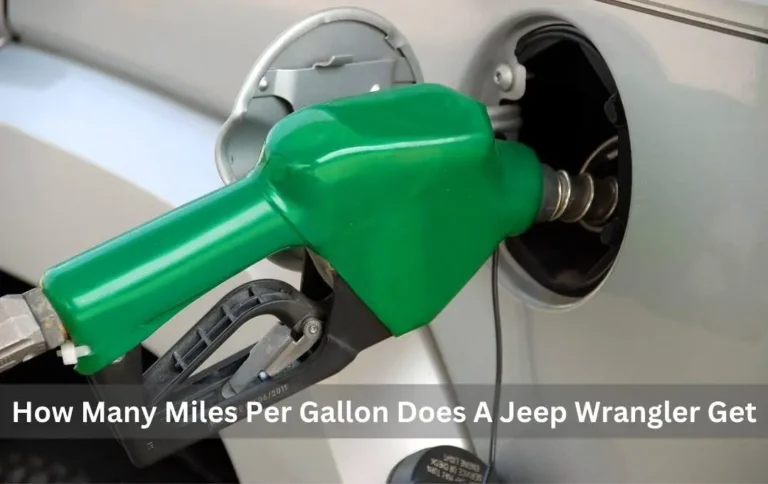How Much Is A New Jeep Wrangler Engine? A Comprehensive Guide
How Much Is A New Jeep Wrangler Engine? A Comprehensive Guide jeeps.truckstrend.com
The iconic Jeep Wrangler, with its rugged capability and distinctive design, holds a special place in the hearts of adventurers and off-road enthusiasts alike. It’s a vehicle built for challenging terrains and unforgettable experiences. However, like all mechanical marvels, a Wrangler’s engine has a finite lifespan. Whether due to catastrophic failure, high mileage, or the desire for a significant performance upgrade, the question "How much is a new Jeep Wrangler engine?" is one many owners eventually face.
This isn’t a simple question with a single answer. The cost of replacing your Wrangler’s heart can vary wildly depending on numerous factors, from the type of engine you choose to where you have it installed. Understanding these variables is crucial to making an informed decision that balances your budget with your performance and reliability needs. This comprehensive guide will break down the costs, options, and considerations involved in getting a new engine for your beloved Jeep Wrangler.
How Much Is A New Jeep Wrangler Engine? A Comprehensive Guide
Understanding Your "New Engine" Options: More Than Just Brand New
When you hear "new engine," you might immediately picture a pristine, factory-fresh unit. While that’s one option, it’s far from the only one. Understanding the different categories of replacement engines is the first step in deciphering the cost.
-
Brand New OEM Crate Engine: These are engines manufactured by Mopar (Chrysler/Jeep’s parts division) or an original equipment manufacturer, identical to the one installed in a brand-new Wrangler. They come directly from the factory, are typically complete long blocks (engine block, cylinder heads, crankshaft, camshafts, valvetrain), and offer the highest level of quality assurance and reliability. They are also, predictably, the most expensive option.
-
Remanufactured/Rebuilt Engine: This is a popular and often cost-effective choice. A remanufactured engine starts as a "core" (a used, failed engine) that is completely disassembled, cleaned, inspected, and then rebuilt to original factory specifications or better. Worn or damaged parts (pistons, rings, bearings, gaskets, etc.) are replaced with new ones. These engines often come with a good warranty and offer a strong balance of cost and reliability. They usually require you to return your old engine (the "core") or pay a core charge.

-
Used Engine (Salvage/Junk Yard): Sourced from salvaged or wrecked vehicles, a used engine is the cheapest option. However, it also carries the highest risk. The engine’s history, true mileage, and internal condition are often unknown. While some suppliers test these engines, there’s no guarantee of their longevity. This option is typically considered for budget builds or if the vehicle itself has limited value.

Aftermarket Performance Engine: For those seeking a significant power boost or specialized performance, aftermarket engines (like Hemi swaps) come into play. These can be brand-new, purpose-built engines or heavily modified versions of existing blocks. They are highly customizable and often much more powerful but also significantly more expensive, requiring additional components, tuning, and specialized installation.
Key Factors Influencing the Cost of a New Wrangler Engine
Beyond the type of engine, several critical factors will dictate the final price tag:

- Engine Type and Model Year: Jeep Wranglers have featured various engines over the years.
- JK Generation (2007-2018): Primarily the 3.8L V6 (early JK) and the ubiquitous 3.6L Pentastar V6. The Pentastar is generally less expensive to replace than the earlier 3.8L due to its widespread availability.
- JL Generation (2018-Present): Offers the 3.6L Pentastar V6, the 2.0L Turbo I4, and the 3.0L EcoDiesel V6. The high-performance Rubicon 392 features a 6.4L Hemi V8. Newer, more technologically advanced engines like the 2.0L Turbo and 3.0L EcoDiesel generally cost more than the Pentastar due to their complexity and specialized components. The 6.4L Hemi is, of course, the most expensive stock option.
- Source of Purchase: Buying directly from a Mopar dealership will typically be more expensive for the engine part than from an independent engine supplier or online retailer specializing in remanufactured units.
- Labor Costs: This is a significant portion of the total expense.
- Geographic Location: Labor rates vary widely by state and city.
- Shop Type: Dealerships generally charge higher hourly rates than independent mechanics.
- Complexity: Some engines are more challenging to swap than others, increasing labor hours. A typical engine swap can take anywhere from 15 to 30 hours, sometimes more for complex conversions like a Hemi swap.
- Additional Parts and Fluids: The "engine" cost often only covers the long block. You’ll likely need new gaskets, seals, hoses, belts, spark plugs, sensors, oil, coolant, and potentially a new water pump or thermostat. These can add hundreds, if not over a thousand, dollars to the total.
- Warranty: New OEM and remanufactured engines typically come with a warranty (e.g., 1-3 years or unlimited mileage), offering peace of mind. Used engines rarely have more than a short, limited warranty, if any.
- Core Charge: For remanufactured engines, a refundable core charge is applied. This charge is refunded when you return your old engine, allowing the supplier to remanufacture it for future sales.
The Installation Process and Labor Costs
Replacing a Jeep Wrangler engine is a labor-intensive process that requires specialized tools and expertise. It’s not a DIY job for most people. The steps typically involve:
- Disconnecting all electrical components, hoses, and lines.
- Removing the transmission (or separating it from the engine).
- Lifting the engine out of the engine bay.
- Transferring necessary accessories (alternator, power steering pump, AC compressor, intake manifold, exhaust manifolds) from the old engine to the new one.
- Lowering the new engine into place and reconnecting everything.
- Refilling fluids and thoroughly testing the system.
Given the complexity, labor costs typically range from $1,500 to $4,000+, depending on the engine type and the shop’s hourly rate (which can be anywhere from $90 to $200+ per hour).
When is a New Engine Justified?
Deciding whether to repair your existing engine, replace it, or even replace the entire vehicle is a critical financial decision. A new engine is often justified when:
- Catastrophic Failure: A seized engine, thrown rod, cracked block, or severe internal damage makes repair impractical or impossible.
- Cost of Repair Exceeds Replacement: If extensive repairs are needed (e.g., new cylinder heads, crankshaft, multiple internal components), the total cost might approach or even exceed that of a remanufactured engine.
- High Mileage with Multiple Issues: An older engine with recurring problems, excessive oil consumption, or significant wear might be a candidate for replacement, especially if you plan to keep the vehicle for many more years.
- Performance Upgrade: For enthusiasts, a new engine might be installed not out of necessity but out of desire for more power (e.g., swapping a 3.6L for a Hemi).
Practical Advice and Actionable Insights
- Get Multiple Quotes: Don’t settle for the first estimate. Contact several reputable shops (both dealerships and independent mechanics) for quotes on both the engine and labor. Be specific about the type of engine you want (new OEM, remanufactured, etc.).
- Understand What’s Included: Clarify if the quote includes all necessary auxiliary parts (gaskets, fluids, spark plugs, etc.) or just the engine and labor. Hidden costs can quickly inflate the final bill.
- Prioritize Warranty and Reputation: For such a significant investment, a good warranty is invaluable. Research the reputation of both the engine supplier and the installation shop. Read reviews and ask for references.
- Consider the Vehicle’s Overall Condition: Before investing thousands in a new engine, assess the rest of your Wrangler. Is the transmission healthy? Is the frame rusted? Are there other major components nearing the end of their life? You don’t want to put a new engine into a vehicle that will soon need more expensive repairs.
- DIY? Be Realistic: Unless you have extensive automotive experience, specialized tools, a lift, and a reliable engine hoist, attempting an engine swap yourself is ill-advised. The complexity can lead to costly mistakes.
Estimated Costs: How Much Is A New Jeep Wrangler Engine?
Here’s a table summarizing estimated costs for a new Jeep Wrangler engine, including parts and labor. Please note these are general ranges and can vary significantly based on the factors discussed above.
| Engine Type/Model (Jeep Wrangler JL/JK) | Engine Condition | Estimated Engine Part Cost (USD) | Estimated Labor Cost (USD) | Total Estimated Cost (USD) | Typical Warranty | Notes |
|---|---|---|---|---|---|---|
| 3.6L Pentastar V6 (JK/JL) | New (OEM Crate) | $5,000 – $8,000 | $1,500 – $3,000 | $6,500 – $11,000 | 1-3 Years/Unlimited Miles | Most common option. Includes long block. |
| Remanufactured | $3,500 – $6,000 | $1,500 – $3,000 | $5,000 – $9,000 | 1-3 Years/Unlimited Miles | Often requires core return. | |
| Used (Low Mileage) | $2,000 – $4,000 | $1,500 – $3,000 | $3,500 – $7,000 | 30-90 Days or None | Highest risk, inspect thoroughly. | |
| 2.0L Turbo I4 (JL) | New (OEM Crate) | $6,000 – $9,000 | $1,800 – $3,500 | $7,800 – $12,500 | 1-3 Years/Unlimited Miles | More complex, newer tech. |
| Remanufactured | $4,500 – $7,000 | $1,800 – $3,500 | $6,300 – $10,500 | 1-3 Years/Unlimited Miles | Requires core return. | |
| 3.0L EcoDiesel V6 (JL) | New (OEM Crate) | $8,000 – $12,000 | $2,000 – $4,000 | $10,000 – $16,000 | 1-3 Years/Unlimited Miles | Most expensive stock option. |
| Remanufactured | $6,500 – $9,000 | $2,000 – $4,000 | $8,500 – $13,000 | 1-3 Years/Unlimited Miles | ||
| 6.4L Hemi V8 (JL Rubicon 392) | New (OEM Crate) | $10,000 – $15,000+ | $2,500 – $5,000 | $12,500 – $20,000+ | 1-3 Years/Unlimited Miles | Specific to Rubicon 392, not a common swap. |
| Aftermarket Hemi Swap (e.g., 5.7L/6.4L) | New Crate/Built | $10,000 – $25,000+ (kit + engine) | $4,000 – $8,000+ | $14,000 – $33,000+ | Varies by builder | Highly variable, includes adapters, wiring, cooling, etc. |
Note: These are estimated ranges and can vary significantly based on location, supplier, specific year/model, and additional parts needed (e.g., spark plugs, belts, hoses, fluids, sensors, etc. which are typically not included in the ‘engine part cost’ itself but are necessary for a complete installation).
Frequently Asked Questions (FAQ)
Q: How long does a new engine installation take?
A: Typically, an engine swap can take a skilled mechanic between 15 to 30 hours of labor. This means the vehicle could be in the shop for 2-5 business days, depending on the shop’s schedule and any unforeseen issues.
Q: Is it better to buy a new engine or a remanufactured one?
A: For most people, a remanufactured engine offers the best balance of cost and reliability, often coming with a similar warranty to a new OEM unit. A new OEM engine is ideal if budget isn’t a primary concern and you want ultimate peace of mind. A used engine is only recommended for very tight budgets or project vehicles where risk tolerance is high.
Q: Does a new engine come with a warranty?
A: New OEM crate engines and reputable remanufactured engines almost always come with a warranty, typically ranging from 1 to 3 years and/or unlimited mileage. Used engines usually have very limited or no warranty.
Q: Can I install a new engine myself?
A: While technically possible, an engine swap is a complex job requiring significant mechanical expertise, specialized tools (engine hoist, transmission jack, specific wrenches, diagnostic equipment), and a suitable workspace. For most individuals, it’s best left to certified professionals.
Q: Will a new engine increase my Wrangler’s value?
A: A new engine will significantly increase the functional value of your Wrangler, making it reliable and drivable again. However, it rarely translates to a dollar-for-dollar increase in resale value, especially if the rest of the vehicle is high mileage or has other wear. It prevents the value from plummeting due to a non-functional engine.
Q: What’s a "core charge"?
A: A core charge is a deposit added to the price of a remanufactured part (like an engine). It encourages you to return your old, worn-out part (the "core") so it can be rebuilt. Once your old core is returned, the charge is refunded.
Q: Should I get a Hemi swap for my Wrangler?
A: A Hemi swap (installing a powerful V8 engine) is a popular but very expensive and complex modification. It dramatically increases horsepower and torque but requires significant investment in the engine itself, specialized conversion kits, cooling system upgrades, and potentially transmission/axle upgrades. It’s best suited for dedicated enthusiasts seeking extreme performance, not a typical engine replacement.
Conclusion
Replacing a Jeep Wrangler engine is a substantial investment, but it’s often a worthwhile one to breathe new life into a beloved vehicle. The cost can range from a few thousand dollars for a used engine and DIY installation (not recommended for most) to well over $10,000 for a new OEM or specialized performance engine installed by a professional.
By understanding the different types of engines available, the factors that influence pricing, and the associated labor costs, you can approach the decision with confidence. Always prioritize reliability and warranty for such a critical component. With careful planning and the right choices, your Jeep Wrangler can continue to tackle trails and adventures for many years to come, its heart beating strong once again.







